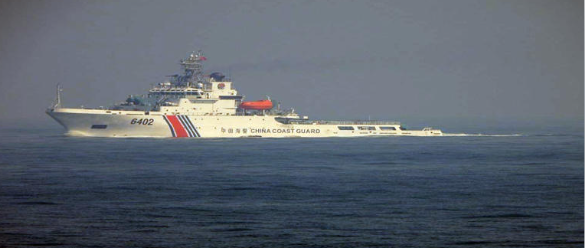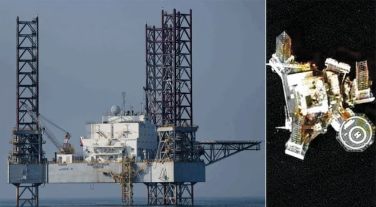Recent maritime dispute between China and South Korea has raised serious concerns in the region. It all started when a South Korean research ship, named Onnuri, tried to approach a large steel structure installed by China in the Yellow Sea. This area lies within the Provisional Measures Zone (PMZ) a stretch of water that both countries agreed to share for fishing but not for building permanent structures.
South Korean Ship Blocked by Chinese Coast Guard
In late February, the Onnuri sailed toward the mysterious platform to inspect what South Korean officials believed was an unauthorized Chinese installation. As the ship got closer, several Chinese coast guard vessels and small boats suddenly appeared and surrounded it. The Chinese ships used aggressive maneuvers to block the South Korean ship from getting close to the platform.
Eyewitnesses on board the Onnuri reported that some Chinese boats had people carrying knives and wearing plain clothes. This made the situation even more tense. The South Korean coast guard, which had sent patrol vessels to accompany the research ship, decided to pull back to avoid conflict.
China’s Aquaculture Platform Raises Suspicions
The structure in question is not a small fishing platform. It is a massive six-story steel installation measuring around 85 meters in width. China has said that it is a floating fish farm, part of an aquaculture project. However, South Korea and international observers believe that it could have dual purposes. It may be used not just for fish farming, but also for surveillance, intelligence gathering, or even military activity in the future.

South Korean officials express particular concern because this kind of activity in the PMZ violates the agreement both countries signed in 2001. That agreement clearly states that the zone, designated exclusively for peaceful fishing operations, must remain free of permanent buildings or platforms.. News Updates
South Korea Responds with Protests and Countermeasures
Following the incident, South Korea’s Ministry of Foreign Affairs filed a formal diplomatic protest to China. They asked for an explanation and demanded that China remove the platform. In response, China refused to back down and insisted that the structure was legal and not related to any sovereignty claims.
As a countermeasure, South Korea installed its own research platform near the area to monitor the situation. This move was seen as a way to show that South Korea would not allow one-sided control of the disputed waters.
A Pattern Seen Before China’s Gray Zone Strategy
Experts believe this situation fits into a larger pattern used by China, often called “gray zone tactics.” These are strategies used to increase influence in a disputed area without starting a full-blown conflict. Instead of sending warships or launching military attacks, China uses coast guard ships, fishing fleets, and floating structures to gradually increase its control over contested territories.

Many analysts note that China has already used similar tactics in the South China Sea, building artificial islands and later converting them into military bases Now, they fear the Yellow Sea could be next.
Risk of Escalation and Implications for Maritime Security
As tensions simmer, the future of the PMZ hangs in the balance. If China continues to enforce access restrictions and expand its platforms, South Korea may escalate its response, including naval patrols or legal action . Meanwhile, experts warn any aggressive push could affect not only South Korea-China ties but also regional alignment with the US and Japan. With growing concern toward maritime sovereignty and freedom of navigation, the Yellow Sea could become the next flashpoint.

